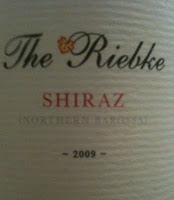
Pleasure is the only thing to live for. Nothing ages like happiness.
~ Oscar Wilde
What takes your fancy? That which is cerebral, or that which washes over you in waves of hedonistic pleasure? This could be a more general question about your attitude to life, but is also a relevant question with wine.
For anyone who drinks wine, from the casual drinker to a devoted tragic like myself, the concept of a hedonistic wine is probably pretty self-evident and something most of us have experienced. In a very broad sense, it will be a flavoursome wine whose charms will be immediately apparent.
That being the case, what is a cerebral wine? This is perhaps less evident. When someone talks or writes about a wine being “cerebral”, to me it signifies that it is first and foremost a wine of structure. A cerebral wine might seemingly lack flavour in comparison, but rather has you thinking about things like its shape, its fine line of acidity, its powdery tannins, its sense of texture. For the more casual wine drinker, these concepts might seem a bit abstract. Moreover, if you’re drinking a “cerebral” wine, especially in its youth, you might be wondering what all the fuss is about and why it warrants a $60 price tag. Conversely there is many a wine lover who go a bit gaga over this type of wine, as something worthy of contemplation and potential future greatness.
Of course, it’s not an either or proposition. While a wine might have a bias towards one of these broad traits, it will very often have a reasonable amount of the other characteristic as well. And indeed there are good wines that really don’t exhibit either trait, and fit into a more luncheon claret type mould. However, arguably the greatest wines are both cerebral and hedonistic. In the same way that great classical music stirs both the purist and the public, and some great films can not only be enjoyed, but also appreciated, a great wine for me sits on a bedrock of structure worthy of contemplation while also enabling you to sit back and savour its layers of flavour. It delivers the best of both worlds.
The interesting thing for me are those wines that have a predominance of one trait in youth, and then engender the question as to whether they will ever exhibit enough of the other trait to become a great wine. An ageworthy and complex wine. For a wine that might be described as hedonistic in youth, there is always the question as to whether it has enough balance and structure to really develop and improve with time. Barossa Valley Shiraz is perhaps the most obvious example in Australia of a style of wine that has typically sat on the hedonistic side of the fence. When drinking a young Shiraz from this region, more often than not its charms are immediately evident, and there’s generally no shortage in pleasure that this style of wine brings to the table. What is less evident is whether leaving a bottle of Barossa Shiraz in the cellar for 10 years or more will see it much improved. Will the structure of the wine enable it to age well, and indeed is there enough inherent complexity there to warrant ageing it for that long. For the very best Barossa Valley Shiraz the answer is absolutely yes, but for the majority I would argue that it is debatable, and that the greatest amount of drinking enjoyment is to be had in the first 5 years. The question for which there is often a fluid answer, is how to tell which of these wines will be the former, and which will be the latter.
Conversely, there are wines that seemingly have the structure of a great wine, but in their first few years of existence you are forced to question whether they will ever generate enough flesh or flavour to provide real drinking pleasure. They are wines whose grapes might well be picked on the under-ripe side of ripe, and whose acidity is rather prominent. They are wines that will often be treated in a rather gentle way in the winery, with for example a lesser percentage of new oak (or no new oak at all). They are often challenging wines that require thought as to where they are heading given time. The new vogue of lean Australian Chardonnays in many instances fall into this category. I’ve reviewed a number of Chardonnays on this site, where I’ve appreciated the structure of the wine, but have nevertheless questioned whether they will ever build enough flavour and generosity for my tastes. Lets hope they do, as it’s arguably one of the most enjoyable things in wine appreciation to see a wine go from one of structure and promise in its youth, through to something complex and enjoyable over 5, 10, or 15 years.
In my cellar I have wines that cover all these permutations. Wines that give great drinking pleasure now, but that I have an inkling may also go the distance. Wines that are somewhat austere and unyielding, wines of structure, but that I believe will blossom with time. And finally wines that would seemingly enable you have your cake and eat it to, drinking well now but with everything in place to age with confidence. Only time will tell how these different styles of wines ultimately age and develop. My hope is that they will all age well and help me embrace my inner cerebral hedonist . . .
Red









